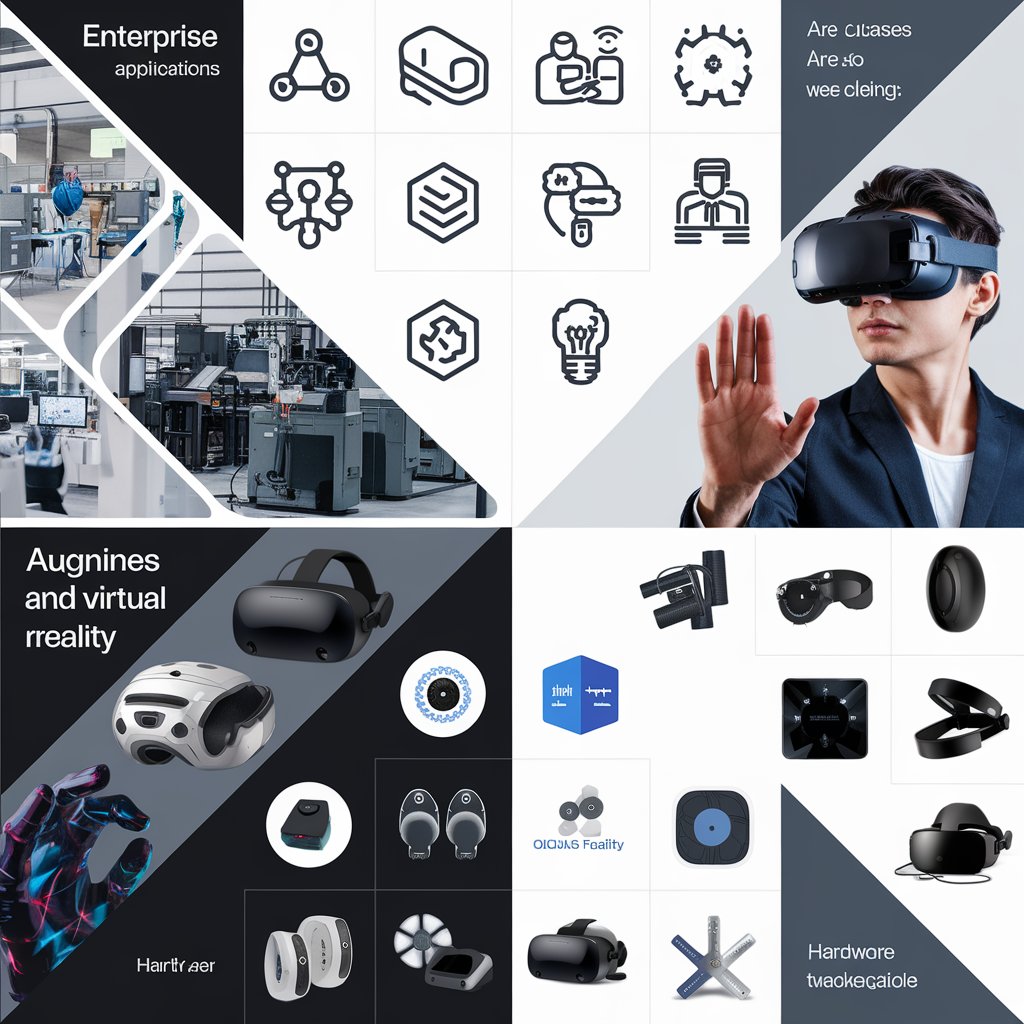Trends Shaping the Future of Augmented and Virtual Reality Industry
The Augmented Reality (AR) and Virtual Reality (VR) industry is experiencing rapid advancements, transforming sectors like gaming, healthcare, education, retail, and manufacturing. Key trends include:
- Immersive Experiences: Enhanced AR and VR technologies are creating more immersive and realistic experiences. This includes advancements in haptic feedback, eye-tracking, and spatial audio.
- 5G Integration: The rollout of 5G networks is significantly improving AR/VR experiences by reducing latency and enabling real-time data transmission, crucial for applications like remote surgery and real-time collaboration.
- AI and Machine Learning: AI-driven features such as gesture recognition, object detection, and environment mapping are enhancing AR/VR applications, making them more interactive and context-aware.
- Enterprise Adoption: Beyond entertainment, AR and VR are being increasingly adopted in industries for training, design, and remote maintenance, driving productivity and reducing operational costs.
- Wearable Technology: Development of lightweight and affordable AR glasses and VR headsets is accelerating, making these technologies more accessible to consumers and businesses.

Augmented and Virtual Reality Market Growth Projection
The AR and VR market is projected to witness exponential growth in the coming years, driven by increased investment in technology development, rising consumer demand, and widespread adoption across various industries. According to industry reports, the Augmented and Virtual Reality Market was valued at USD 22.12 billion in 2024 and is expected to reach USD $96.32 billion by 2029, at a CAGR of 34.2% during the 2024-2029 period. Key drivers of this growth include the proliferation of smartphones and wearable devices, advancements in display technologies, and the growing demand for immersive content.
Top Companies in the Augmented and Virtual Reality Industry
Several key players dominate the AR and VR market, each contributing to its rapid evolution:
- Meta (formerly Facebook): With its Oculus brand, Meta has been at the forefront of VR development, focusing on both consumer entertainment and enterprise solutions.
- Microsoft: The company’s HoloLens platform is a leading AR solution used in various industries, including healthcare, manufacturing, and education.
- Google: Known for Google ARCore and Google Glass, the company continues to invest in AR to enhance user experiences across its ecosystem.
- Apple: While not yet having released a dedicated AR/VR device, Apple is heavily invested in AR technology through ARKit and is rumored to be developing AR glasses.
- Sony: Sony’s PlayStation VR is a key player in the gaming sector, delivering immersive gaming experiences.
Regional Analysis
- North America: Leads the global AR and VR market due to high technology adoption rates, substantial investment in R&D, and a strong presence of key players.
- Europe: The market in Europe is driven by increasing adoption in sectors like automotive, healthcare, and education.
- Asia-Pacific: Expected to witness the highest growth rate, fueled by rising consumer demand, increasing investment in AR/VR startups, and government initiatives supporting digital transformation.
- Latin America and MEA: Emerging markets with growing adoption in industries such as retail, education, and entertainment, supported by improving digital infrastructure.
Opportunities in the Augmented and Virtual Reality Industry
- Healthcare: AR and VR technologies are increasingly used in medical training, patient care, and treatment planning, offering opportunities for improved healthcare outcomes.
- Education and Training: AR and VR provide immersive learning experiences, enhancing education and professional training in fields like engineering, medicine, and military.
- Retail and E-commerce: Brands use AR to enhance shopping experiences, allowing customers to try products virtually before purchase.
- Entertainment and Gaming: Continued growth in the gaming sector presents significant opportunities for VR, creating more engaging and interactive content.
- Remote Collaboration: With the rise of remote work, AR and VR are being used for virtual meetings, collaborative design, and remote maintenance.
Challenges Facing the Augmented and Virtual Reality Industry
- High Costs: Despite decreasing prices, AR and VR hardware and development costs remain a barrier for widespread adoption.
- Privacy and Security: Concerns about data privacy and security in AR/VR environments pose significant challenges, especially for consumer applications.
- Technical Limitations: Issues like motion sickness, limited battery life, and the need for high processing power restrict the user experience.
- Content Availability: The industry still faces a shortage of high-quality AR/VR content, essential for user engagement and sustained growth.
- Interoperability: Lack of standardization across AR/VR platforms can lead to compatibility issues, hampering seamless integration and adoption.
Augmented and Virtual Reality Industry Segmentation
- By Component: AR and VR hardware (headsets, sensors, etc.), software (AR development kits, VR content management), and services.
- By Application: Gaming, healthcare, education, retail, manufacturing, real estate, defense, and automotive.
- By Device Type: AR devices (smart glasses, head-up displays), VR devices (headsets, gloves, consoles).
- By End-user: Enterprises, consumers, education, and government sectors.
- By Region: North America, Europe, Asia-Pacific, Latin America, and the Middle East & Africa.
The AR and VR industry is poised for significant growth, driven by technological advancements, increasing applications across various sectors, and growing consumer and enterprise adoption. However, to fully realize its potential, the industry must address challenges related to cost, privacy, technical limitations, and content creation.
